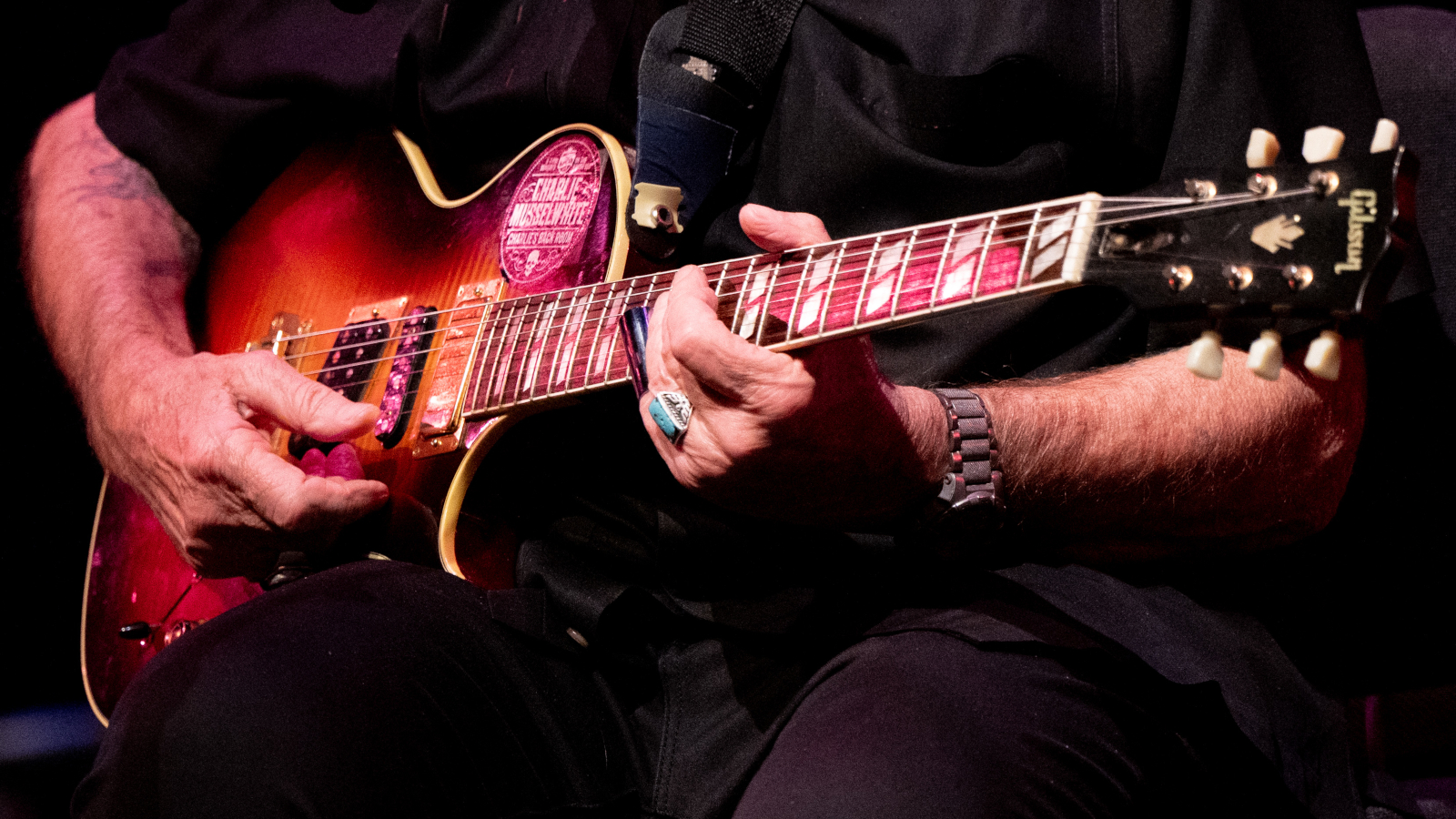The Mixolydian Blues Scale Could Be the Most Useful Scale of All
This scale reigns supreme as the chief source for carving those major/minor blues-based licks that sound so good over dominant 7th chords

Hybrid scales combine two different scales that share the same root. The world’s finest improvisers use them as a source for creating unique harmonic textures in their solos.
In the world of guitar, one of the most popular and useful of these scales is the Mixolydian/blues hybrid. A combination of the Mixolydian mode and the blues scale, the Mixolydian/blues hybrid scale reigns supreme as the chief source for carving those major/minor blues-based licks that sound so good over dominant 7th chords.
As its name implies, the Mixolydian/blues hybrid scale is created by superimposing the blues scale (1-b3-4-b5-5-b7) over the Mixolydian mode (1-2-3-4-5-6-b7). FIGURE 1 shows this process in 4th position in the key of A.
The end result is a nine-note scale (1-2-b3-3-4-b5-5-6-b7) containing both major (3rd) and minor (b3rd, b7th) tonalities as well as blues (b5th) and chromatic (2nd degree through the 5th) properties. This makes it an ideal choice for coloring dominant 7th chords and Mixolydian progressions.
If you play the A Mixolydian/blues hybrid scale pattern in FIGURE 1 like you normally would a diatonic scale, you’ll quickly discover that it doesn’t sound quite right. This is because it is a synthetic scale and not intended to be used in conventional fashion. Its purpose is to help you overlap blues-scale phrases with Mixolydian lines (and vice versa).
FIGURE 1

This commingling creates a major/minor tonality – or Mixo-bluesian, if you will. Play through the modern blues lick in FIGURE 2 for an example of this push-pull concept. Key moments are the minor 3rd to major 3rd (C-C#) moves, the minor 3rd to major 2nd (C-B) slide, and the strategic placement of the F# (major 6th) notes. Using this example as a blueprint, revisit some of your favorite A blues scale licks and try drafting a few C#, F# or B notes onto them.
All the latest guitar news, interviews, lessons, reviews, deals and more, direct to your inbox!
FIGURE 2

The ever-popular E7#9 chord (a fixture in blues-rock and hard-core funk) can prove the perfect vehicle for the E Mixolydian/blues hybrid scale. This is an enticing situation, as the chord is not only dominant in quality but also contains a sharp 9th (F## – or G) which is the enharmonic equivalent of a minor 3rd. Check out how the chord and the scale complement each other in the funky blues-rock example in FIGURE 3.
FIGURE 3

No stranger to the jazz world either, the Mixolydian/blues hybrid scale can be found at the heart of many bebop lines. FIGURE 4 mates the C Mixolydian/blues hybrid with a C13 chord for a cool ride around the chord tones.
FIGURE 4

The scale also adapts well to the world of hard rock. Fretboard scorchers such as Eddie Van Halen and Angus Young have been known to use the Mixolydian/blues hybrid scale to fuel fiery cadenza licks like the one in FIGURE 5. This one set the A Mixolydian/blues hybrid scale against an ambiguous A5 backdrop typical of the genre.
FIGURE 5

Finally, if you chip away a few notes from the Mixolydian/blues hybrid scale, you’ll also find the Dorian mode (1-2-b3-4-5-6-b7), the major pentatonic scale (1-2-3-5-6) and the minor pentatonic scale (1-b3-4-5-b7) lurking within. With this in mind, you’ll find that the Mixolydian/blues hybrid scale, when used with care, will work in a wide variety of situations. Now get out there are start playing the Mixo-bluesian licks!
Guitar Player is the world’s most comprehensive, trusted and insightful guitar publication for passionate guitarists and active musicians of all ages. Guitar Player magazine is published 13 times a year in print and digital formats. The magazine was established in 1967 and is the world's oldest guitar magazine. When "Guitar Player Staff" is credited as the author, it's usually because more than one author on the team has created the story.
